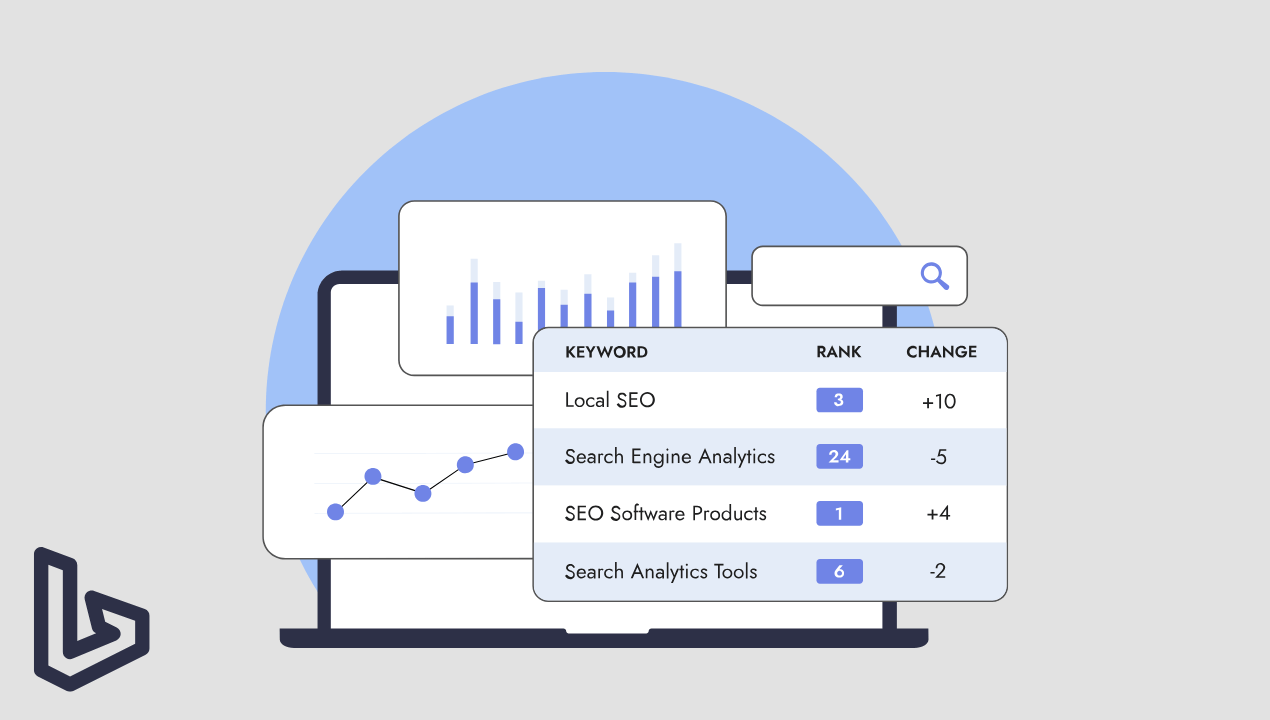Everyone’s obsessed with Google. And for good reason. So, it holds the lion’s share of global search traffic. But here’s what savvy marketers know: Bing matters more than most people think. In this Bing SEO comprehensive guide, you’ll learn the best methods & techniques for ranking on the Microsoft search engine.
If you ignore Bing SEO, you’re ignoring over a billion monthly searches, a high-converting audience and a platform where it’s still possible to rank without battling a million competitors.
In this guide, you’ll learn everything you need to optimize your site for Bing, how its algorithm works, why it’s different from Google and how to gain an edge where most of your competitors aren’t even looking.
Why Bing Deserves Your Attention
You might be wondering, “Is Bing even worth it?” Let’s look at some facts.
- Bing powers searches on Microsoft Edge, Windows desktops, Cortana, and even Alexa
- It fuels Yahoo search results
- Bing has over 9% of global desktop search market share and over 30% in the US
- The audience skews slightly older, more affluent and more likely to convert
So while the volume might be smaller, the value per user can be higher. And with lower competition, you have a better shot at ranking.
What Makes Bing’s Algorithm Different? Bing SEO
While there’s overlap between Google and Bing SEO, Bing’s algorithm has some unique preferences that affect rankings.
Here’s a side-by-side comparison: Ranking Bing Search Engine
| SEO Factor | Google Focus | Bing Focus |
|---|---|---|
| Backlinks | Authority, relevance, diversity | Authority matters, but exact match anchors help more |
| On-Page Optimization | Semantic search, natural language | Keywords in titles, exact match phrases |
| Content Freshness | Prioritized for certain topics | Not as heavily weighted |
| Technical SEO | Core Web Vitals, mobile-first indexing | Page load speed matters, mobile optimization less critical |
| Social Signals | Minimal impact | Stronger influence on visibility |
| Multimedia | Helpful, not required | Image/video optimization can boost rankings |
Bing is less sophisticated in natural language understanding but more transparent in how it ranks content. That makes it a goldmine for businesses that understand how to work the system.
Let’s get into how.
1. Set Up and Optimize Bing Webmaster Tools to Start SEO
Just like Google has Search Console, Bing has Webmaster Tools. This is where you:
- Submit your sitemap
- Monitor indexing issues
- See click-through data
- Access keyword performance
If you’re already using Google Search Console, you can import your data directly.
Bonus tip: Use the SEO Reports feature inside Bing Webmaster Tools. It provides real-time feedback on common issues like missing alt tags or duplicate titles for ranking in the Bing Search Engine.
2. Focus on Exact Keyword Matching (Yes, Really)
Unlike Google’s algorithm, which leans heavily on semantics and search intent, Bing still values exact-match keyword usage.
Best practices:
- Include your primary keyword in the title tag ideally at the beginning
- Use it naturally in your H1 and meta description
- Sprinkle it throughout your content without stuffing
- Match page content to keyword intent: if someone searches “best CRM for lawyers,” don’t show generic software options
This old-school tactic works better on Bing than Google. Take advantage of it.
3. Build Authoritative, Clean Backlinks: Bing SEO
Backlinks still matter on Bing. But instead of chasing a huge quantity, focus on:
- Domain authority: Bing values links from trusted, established domains
- Exact-match anchors: They carry more weight here than on Google
- Relevant pages: Contextual linking wins. So, even on smaller sites
A link from a niche authority blog with your keyword in the anchor text? That’s Bing gold.
4. Don’t Ignore Your Domain Age and Extension
Bing tends to favor older domains with a consistent history. If your site has been live for a few years, that’s already a trust signal.
It also appears to prefer traditional TLDs like .com, .org or .edu. While not a deal-breaker, it’s worth noting for new brands still choosing a domain name.
5. Create High-Quality, Keyword-Rich Content
Yes, content is still king. But Bing has some preferences worth noting.
Here’s how to write for Bing:
- Use keywords early and often, especially in headers and first paragraphs
- Write in clear, formal structure Bing struggles with overly conversational or slang-heavy writing
- Include synonyms and closely related phrases to reinforce topic depth
- Use numbered or bulleted lists, which Bing seems to like for snippet results
- Answer the question directly when targeting Q&A-style searches
Bing also tends to reward longer content that is informative, well-organized and easy to scan.
6. Bing SEO: Don’t Skip Image and Video
Bing places greater weight on multimedia than Google. That means optimizing your images and videos can give you an edge.
Tips to Ranking Bing Search Engine:
- Use descriptive filenames (e.g., dog-training-tips.jpg)
- Add keyword-rich alt text for every image
- Host videos on your site if possible (instead of just embedding from YouTube)
- Use Bing Video Search schema markup to help with indexing
- Submit video sitemaps for better crawling
These assets can help you rank not just in standard results, but also in Bing Image and Video Search tabs.
7. Use Schema Markup and Structured Data
Bing supports schema.org markup and uses it to enhance results. This means:
- Rich snippets in listings
- Better indexing of reviews, recipes, articles, FAQs and more
- Greater context for Bing’s crawler
Use structured data generators like Google’s Structured Data Markup Helper and validate with Bing’s own Markup Validator tool.
8. Improve Click-Through Rate with Better Titles and Descriptions
Bing cares about engagement signals. That includes how often people click your listings, and whether they bounce right away.
To boost CTR:
- Write clear, punchy titles with your main keyword
- Keep meta descriptions benefit-focused, not generic
- Include numbers, brackets or calls to action to catch attention
- Make sure your URL is readable and matches the page topic
You want users to feel confident they’ll get what they need if they click.
9. Social Signals Matter More Here
While Google has downplayed social impact, Bing openly acknowledges that likes, shares and social engagement influence rankings.
What to do:
- Share your content on LinkedIn, Facebook and Twitter
- Use social share buttons on every post
- Encourage sharing through CTAs in your content
- Build content worth sharing. So, a unique stats, visuals, opinions
Bing sees social signals as a form of endorsement and freshness. Use it to your advantage.
10. Optimize for Local Search (If You’re a Local Business)
Bing has its own version of Google Business Profile, called Bing Places for Business.
Steps to get started:
- Claim and verify your listing
- Use your exact business name and consistent NAP (Name, Address, Phone)
- Add high-quality images
- Choose accurate business categories
- Ask customers to leave reviews
Bing pulls local pack results from these listings, so a fully optimized profile helps you rank for terms like “dentist near me” or “best accountant in [city]”.
Final SEO Checklist for Bing Rankings
Here’s a summary of the key actions you need to take:
| Task | Why It Matters |
|---|---|
| Set up Bing Webmaster Tools | Monitor and fix site performance |
| Use exact match keywords | Align with Bing’s simpler algorithm |
| Build high-authority backlinks | Boosts trust and relevance |
| Optimize multimedia content | Increases exposure in image/video search |
| Add structured data markup | Helps Bing understand your content faster |
| Improve click-through rates | Engagement signals influence ranking |
| Activate Bing Places for local SEO | Essential for visibility in local searches |
| Promote content on social media | Bing uses social signals in ranking |
| Keep site speed and usability in check | User experience still affects visibility |
| Produce detailed, keyword-rich content | Long-form performs better on Bing |
Final Thoughts: Bing Is the Smart Marketer’s Secret Weapon
While the world races for page one on Google, Bing remains a quieter, more approachable search engine with real opportunity.
It rewards clarity over complexity, authority over trendiness and exact relevance over endless content tweaking. If you apply even half the strategies in this guide, you’ll likely outperform competitors who don’t even know where Bing Webmaster Tools is.
So don’t chase noise. Build a presence where your audience actually converts and where you can be found without shouting.








